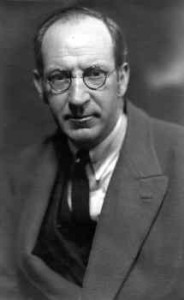
(1877-1948).
FOR MANY generations Patersons were employed as the pilots for ships entering Beauly Firth from the Moray Firth and were based mainly at North Kessock on the Black Isle. Patersons were also at times the Kessock ferrymen.
Peter Paterson was a shipmaster and in 1841 his son, James was born. James also became a seaman in the merchant marine, and later a ship’s captain. Isabella Noble was born in 1843, in Brackla, Cawdor. Her father Donald Noble was a maltster in a brewery.
James Paterson married Isabella Noble in Inverness in 1865 and together they had seven children, with the last child born after James died. There were Isabella, Donald, Peter, Elsie, and Alexander before Andrew Paterson was born on the morning of 29th September 1877, at 18 Shoe Lane, Merkinch, Inverness.
When Andrew was two years old, his father died by accidental drowning in the Moray Firth during the first Inverness Regatta. A shipbuilder called John Bremner also drowned in the same incident. Captain James Paterson was an experienced seaman and a powerful swimmer who had been invited aboard the Bella to participate in the first of what was to be a series of regattas in the district. The Bella was a craft of 20ft keel, recently built by Bremner, the principal originator of the regatta. It had been a gusty afternoon and a sudden squall across the water struck with great violence, casting the boat over on her beam ends. She rapidly filled and went down head foremost. Only two minutes elapsed from the time she was struck until she had disappeared and Paterson was taken down with her. Bremner and the other crewman got hold of an oar each and one of the racing craft bore down rapidly on the two men, but Bremner sunk before he could be rescued.
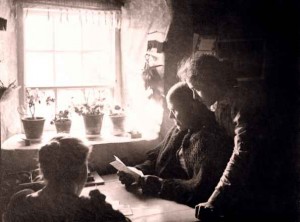
Isabella Paterson inside The Neuk,
the cottage on North Kessock.
Five months later Paterson’s wife gave birth to their daughter, who was named Jamesina, and although the Patersons had come from a long line of seamen, none of James Paterson’s sons joined the merchant marine. Donald became a stonemason, Peter a restaurateur and master baker, Alexander a printer and bookseller, and Andrew became an artist-photographer. Elsie worked for Andrew as his saloonist, doing hair and makeup, in the early 1900s.
Andrew Paterson attended the Inverness Merkinch Public School from 1882 until 1890, when he left at age 13, “To be a baker,” possibly working for (or with) his brother Peter. In the 1891 Census he was listed as a message boy (possibly with the bakery). He didn’t stay in Inverness long, as an 1892 cabinet print of Paterson aged 15 taken by Ovinius Davis of Edinburgh shows him wearing a sailor suit with the hatband of HMS Caledonia, which at the time was a Scottish boys’ training/school ship moored at Queensferry in the Firth of Forth.
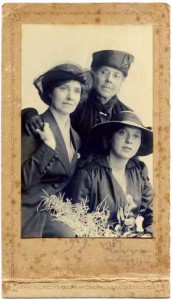
in 1919.
Andrew Paterson learned the art of taking photographs locally but gained further experience down south before returning to Inverness. He did a six month stint with the Emery & MacGillivray photographic studio in Bridge Street, Inverness, before leaving in June 1895 aged 18. MacGillivray wrote him a reference: “Mr Andrew Paterson has been in my employment for the last six months as assistant and during that time proved himself to be very willing, punctual, thoroughly trustworthy and also total abstainer and can recommend him to any one in need of such as a good all round hand having a knowledge of all his branches – left here of his own accord.”
The reason Andrew Paterson left the MacGillivray studio was to open his own photographic business at 32 Church Street.
In 1901 at the Station Hotel, Inverness, Paterson married Jean (Jenny) MacKenzie MacLennan, who was born in 1878, the daughter of blacksmith Hector MacLennan, of Windyhill, Ardersier, and Annie MacGillivray. Jenny was the eldest of five children, followed by George, Annie, William, and Margaret MacLennan.
Andrew and Jenny in turn had three children. Daughter Constance was born in 1902 and the twin boys Hector and Hamish in 1904.
In 1903 Paterson relocated his studio to 15 Academy Street, Inverness. The building had been a photographer’s studio for some time; in 1887 it had been the premises of photographers Johnston & Kay and more recently had been the location of the Northern Studio, which had been taken over by J. Jeffrey Morrison in July 1900. In 1905 the buildings along the street were re-numbered and the address became 19 Academy Street.
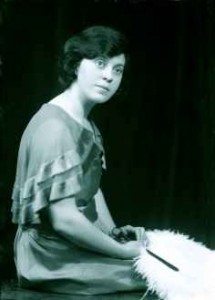
In 1905, Paterson’s mother Isabella died.
In 1910 Paterson began building a home for his family on Culduthel Road, designed in Art Nouveau style by the architect William Carruthers. (It was listed as a Category B building by Historic Scotland in the late 1980s.) He moved in the following year and called the house Tigh-an-Uillt, Gaelic for the ‘house of the stream.’ Paterson also owned a cottage called The Neuk on Point Road, North Kessock. Paterson and his family would spend every summer there until he sold the property c1945.
In 1912 Paterson began experimenting with moving film, producing one of the earliest cinematic films in Scotland. He decided to use the natural setting of the coast at North Kessock to tell a story of smuggling and romance. His cast of eight were all amateurs from Inverness, and he himself wrote the script, directed and photographed the film. Paterson was also heavily involved in the local amateur dramatic scene, and he produced and starred in many stage plays over the years, in particular the smash hit Rob Roy.
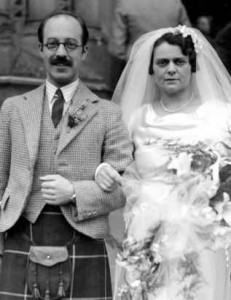
In 1916 at the height of the First World War, he founded the Camerons’ Comforts Fund, which raised money and sent parcels to men serving in the different Battalions of The Queen’s Own Cameron Highlanders. (Wound down during the 1920s, it was re-established by Paterson at the outbreak of the Second World War.)
A keen Freemason, he also interested himself particularly in the philanthropic side of the craft and organised outings and entertainments for the children of the Highland Orphanage.
In 1921 his son Hector became his apprentice in the photographic studio. A few years later Hector moved to Edinburgh to apprentice the photographer Drummond Young while also attending the Edinburgh College of Art. The 1920s-1930s were very successful years for Paterson, whose services were sought by many leading political and commercial figures of the day. Often away in Glasgow, he spent some time in 1935 in the photographic studios of the Daily Record, collaborating with their own staff photographers.
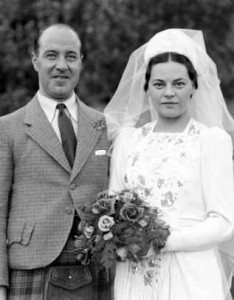
Paterson’s daughter Constance married Frank Chalmers in 1936, and Hector married Stella Saunders the following year. In 1940 Hamish, who was a Chartered Architect, married Florence Ross. During the Second World War both sons served in the armed forces. Hamish was a Major in the Royal Engineers and Hector enlisted with the RAF. Posted firstly to the Middle East, then seconded to the Royal New Zealand Air Force, he later served in Burma.
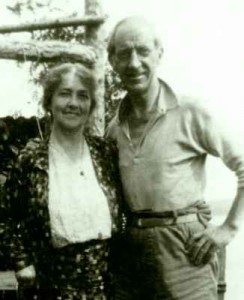
Paterson’s wife Jenny died in July 1948, and he followed her on 15th December the same year. His obituary recorded, “He had been unwell for some time, his health having failed rapidly after the death of his wife, and his death was not unexpected.”
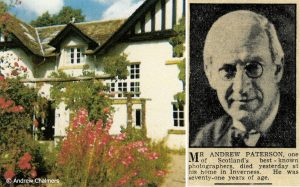
at Tigh-an-Uillt in December 1948.
Hector took over the running of the studio in 1949 until his own retirement in 1980.